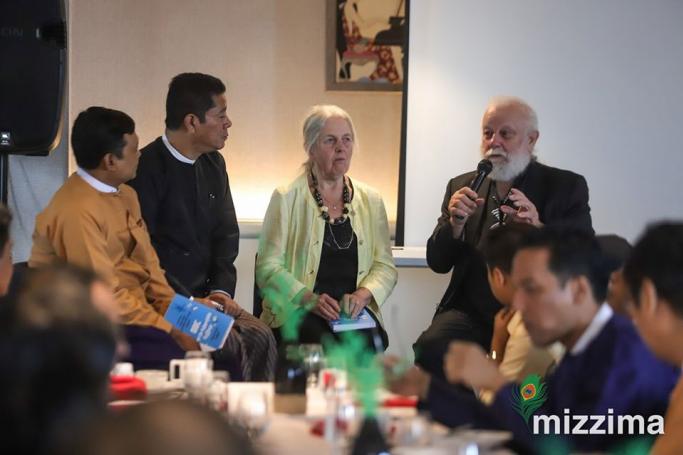“Social innovations play a critical role in developing any society and they are equally important, if not more, when compared to technological and scientific innovations. Though not patented, social innovations, in fact would often lead to technological break-through. Finland shows the way in this arena of social innovations and able to reach to the top of the chart in terms of economic and social well being of its people”.
This was the sum and substance of an interesting panel discussion held on the eve of release of Burmese translation of an edited volume, “100 Social Innovations from Finland”. The Burmese translation published by Mizzima was released on the 14 November in Yangon along with a panel discussion on the subject.
Speaking on the occasion, scholar-political activist couple, Dr. Ilkka Taipale & Dr. Vappi Taipale, identified five key areas of social innovations in Finland that contributed to the country’s development. Finnish society was able to demonstrate resilience and built the edifice of development after the Second World War through innovative social policy, economic and social innovations. These were often small but significant in terms of their impact on the communities. Such innovations were identified and documented, in the arenas of free education, equality between men and women, autonomy to municipal bodies, a large number of NGOs or CSOs in various fields, and social capital.
There are several historical struggles and innovations in public policies in the above areas, which has gradually led Finland to be one of the top ranking developed countries. Currently it spends over 4 per cent of GDP on research and development, foundations of which can be traced to the social innovations.
Universal education starting from kindergarten to university education is hallmark of Finland society. Innovative delivery of kindergarten education has also led to greater women participation in labour force. Similarly legislative measures led to significant number of women in the parliament over the years - 97 out of 200 in the current parliament; significant levels of autonomy of elected municipalities of the country (akin to townships in Myanmar) where in resource generation and public services delivery are designed to be closer to people; presence of large number of NGOs, numbering over 100,000 in various fields supporting the communities, higher levels of trust that led to multi party democratic coalitions have all contributed to the robustness of the society in Finland.
Social innovations related to political system, education, health care and social policies are significant in Finland. They reflect the way society thinks, works and creates opportunities for all. Published in over 46 languages, this compendium of social innovations, as the authors point out becomes inspirational for societies to look and reflect themselves and build resilience and reconciliation among different groups within the society. Finland was able to wage war on poverty through innovations on the social policy front. Universal solidarity was achieved through reconciliation among warring groups within the society. Social innovations played a significant role in this aspect and there are lessons for other countries to emulate.
This volume covers several of those innovations which reflect social justice and dignity of people like women’s rights issues, corruption, student housing, child care, maternal health, ageing, peace, consensus decision making, electoral system, and national reconciliation processes.
It is commendable that the Embassy of Finland in Myanmar and Mizzima were able to bring this volume in the Burmese language. These innovations provide lessons for not only policy makers and bureaucracy, but also to private sector players, CSOs and intellectuals who would be able to adapt them to the local contexts and address some of the developmental challenges faced by Myanmar society.












